Car review: Electric Zeekr 7X, the family-friendly superhero
Sign up now: Get ST's newsletters delivered to your inbox
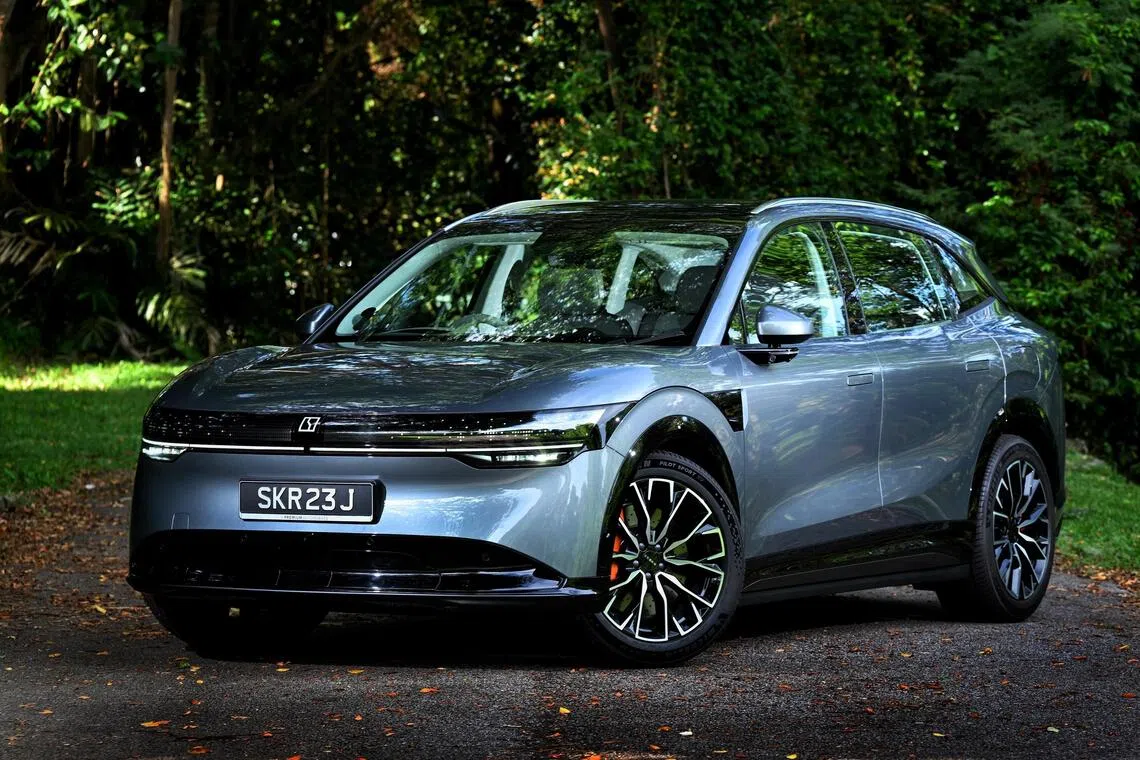
The Zeekr 7X Performance blends premium quality with thoughtful design.
ST PHOTO: CHONG JUN LIANG
Follow topic:
SINGAPORE – If there is one superpower people who drive children around can use, it is to have eyes at the back of their heads to keep tabs on the young ones. Such people will appreciate the rear-seat monitor in the cabin of the Zeekr 7X.
Its infotainment touchscreen can live-stream the view from the camera mounted behind the driver.
The 7X is the third model in Singapore from Zeekr, an electric car brand by Geely,
The Porsche Macan-size sport utility vehicle (SUV) sits between the gigantic 009 luxury multi-seater and the X, which is a compact crossover.
The 7X seems to have inherited some of the characteristics from the other brands under Geely. This includes the pace and handling of Lotus, and Volvo’s thoughtfulness when it comes to the needs of younger families.
The child-monitoring camera is an example of how Zeekr, like other Chinese brands, turns to technology to tackle daily challenges. Volvo’s solution for parents who want to keep an eye on a toddler in a child seat is a detachable mirror.
Controls for the Zeekr’s high-tech rear-seat monitor, along with the settings for the door and window locks, are found in a submenu of the infotainment system curiously named “Child Protection”.
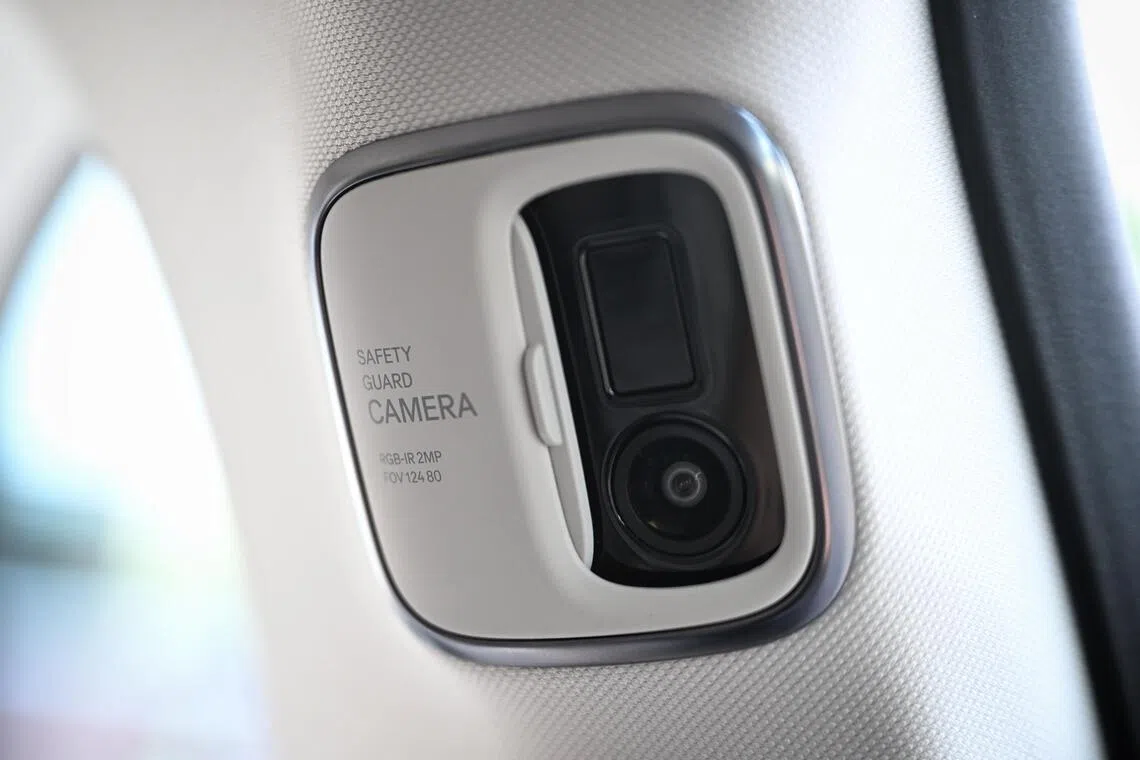
Being watched: Camera on the pillar behind the driver’s seat keeps an eye on the children at the back.
ST PHOTO: CHONG JUN LIANG
When stationary, the 7X can project noises like a bicycle bell’s ring or animal sounds, as well as vocalise short messages such as “Thanks for giving way” through its external speakers.
The perplexed looks from pedestrians and other road users at the traffic junction trying to locate the source of a neighing horse create some chuckles from the car’s young occupants, before they resume bickering.
No one suspects that the horse neighs – and cat meows – have come from something as sophisticated-looking as the Zeekr 7X.
It is an elegant design that has an upright stance in the traditional SUV sense with generous windows.
The most distinctive design element is the thick black mask stretched across the front of the car. This is where the lighting elements are housed.
The test car was equipped with the $8,000 Stargate front-light panel option, which allows the driver to choose from among various preset daytime running light designs, including one that resembles the pixelated aliens in 1980s video game Space Invaders.
In China, the panel can also be made to display English messages, although this feature is not yet available in Singapore.
The test car was also fitted with the $6,500 powered door option. Like modern Rolls-Royces, the 7X’s doors open and close at the touch of a button. The driver’s side door can also be closed by a firm push on the brake pedal.
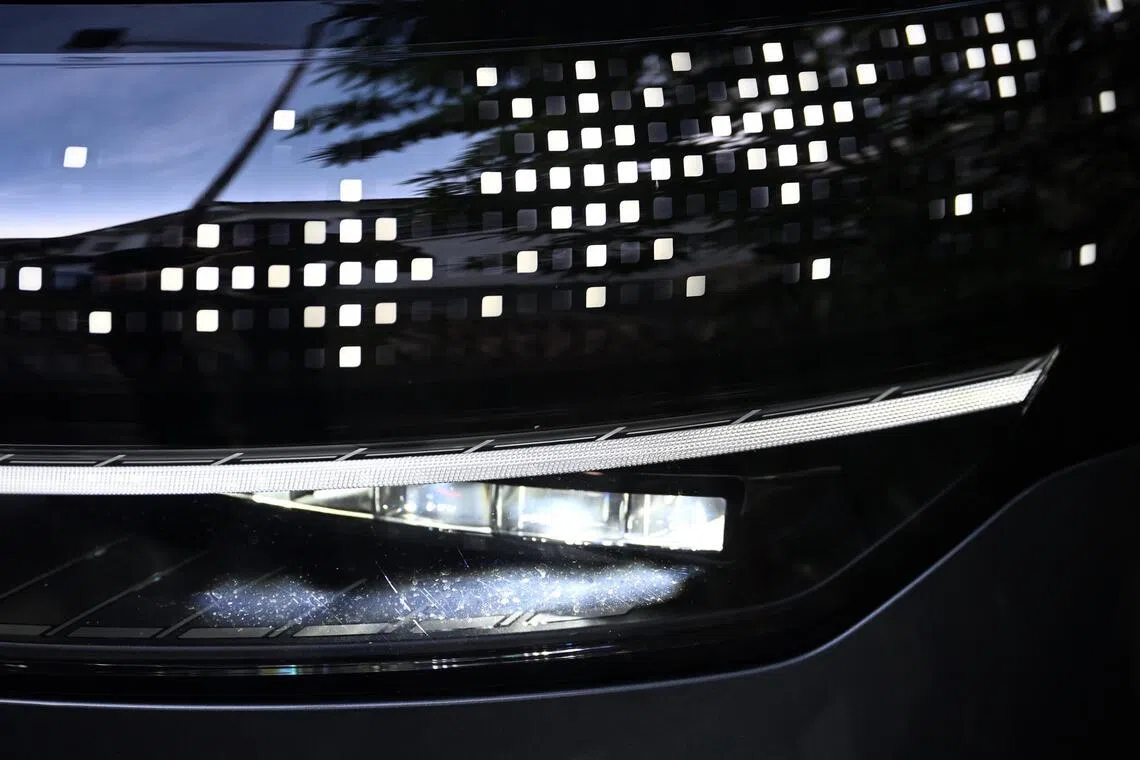
Sky full of stars: The daytime running lights has various unusual LED designs as part of the Stargate option.
ST PHOTO: CHONG JUN LIANG
At times, the proximity sensors can be overcautious when the doors are opening, hesitating because the person is standing too close, or even stopping halfway. It is possible to override the motorised opening function, while the speed of the opening and closing can be adjusted.
The 7X’s cabin is classy. The otherwise conventional-looking layout is tastefully dressed up with details like the acrylic-like illuminated inlay with subtle rose gold accents. In some areas, the finishing seems superior to the more recent offerings from German premium brands.
As with most Chinese cars, the user interface depends heavily on the infotainment touchscreen, but Zeekr has included enough physical switches to make the system very convenient to use.
The screen resolution and responsiveness of the display are as good as the latest mobile devices. Permanently active icons on the side and bottom of the screen make it easy to toggle between menus and functions.

Posh and spiced: The otherwise conventional cabin design is made with high quality materials with nice detailing like rose gold-coloured accents.
ST PHOTO: CHONG JUN LIANG
There are also physical controls for frequently used functions and they operate with satisfying tactility. The stalks on the steering column and the roller barrel for volume control under the touchscreen display, in particular, work with a well-damped feel and precision that would not be out of place in a Lexus.
Parents who are tired out from a weekend of zipping across the island getting from one enrichment class to the next will appreciate the multi-mode massage function of the ventilated front seats.
The 7X, with its generous rear legroom and powered adjustable seat back, can plausibly be used as a limousine of sorts. The occupant in the seat that is diagonally behind the driver can remotely push the front passenger seat forward to liberate even more space.
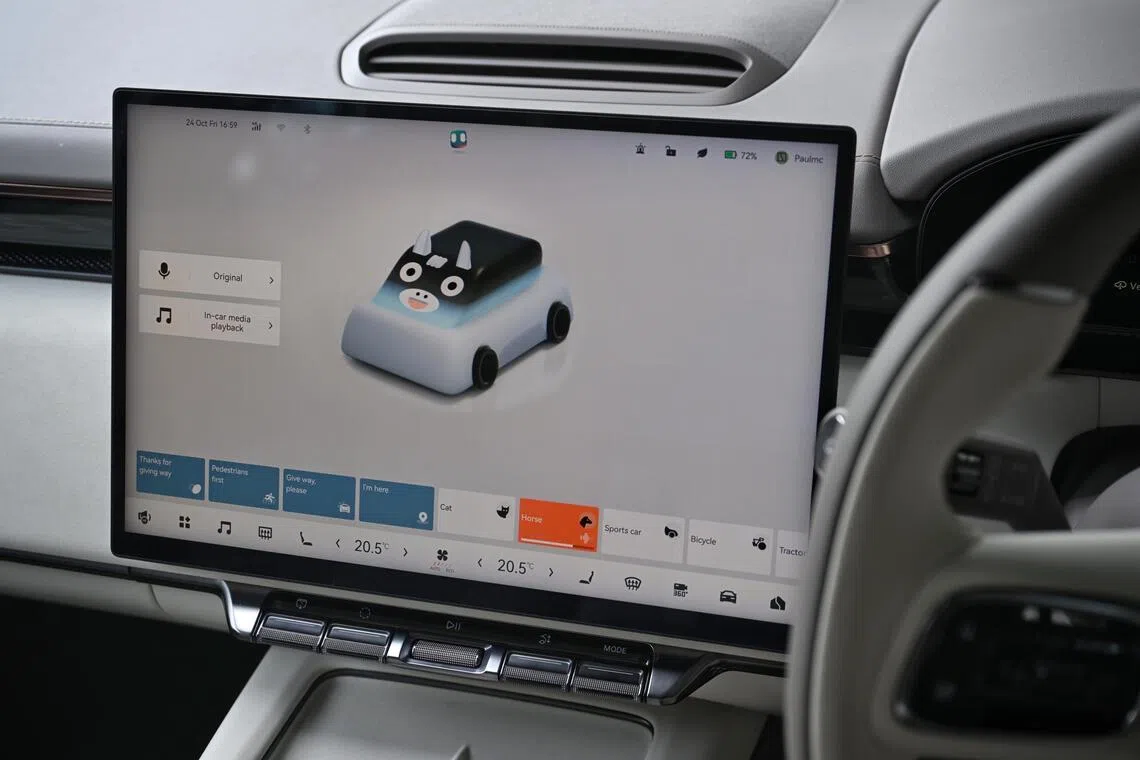
Sensible interface: The bank of digital on the screen and physical controls below the display make it easy to access and configure the myriad functions.
ST PHOTO: CHONG JUN LIANG
Under the padded lid of the centre armrest are a pair of USB connection points. Those seated in front have another pair of USB points under the centre console, which houses two wireless phone-charging pads.
The boot is square and flat, although there is a subwoofer filling up the nook at one side, reducing its width a little. Helpfully, there is a relatively deep bin under the floorboard, which can be useful for carrying groceries.
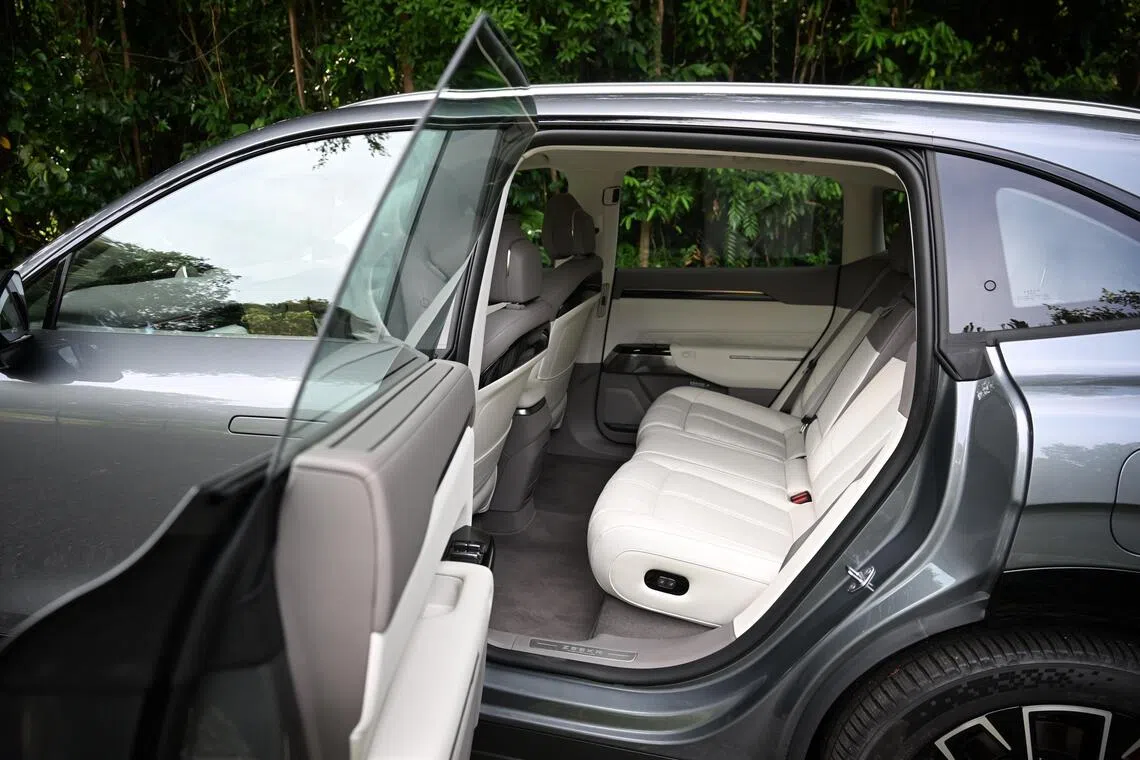
Pseudo limo: Rear legroom is generous, with the button on the side to adjust the seat angle.
ST PHOTO: CHONG JUN LIANG
The 7X drives more like a conventional premium SUV than a digitalised electric car in the style of a Tesla Model Y. Refinement levels are very high, but the cabin is not eerily silent on the move, so it is possible to hear a bit of tyre noise.
The steering is direct, if not particularly feelsome. The air suspension with adaptive damping, which is exclusive to the top-end Performance version, has an almost Lotus-like quality in terms of the balance it strikes between confident handling and ride comfort.
Over 250km covered, the test car’s trip computer registered an average energy consumption rate of 20.1kWh/100km, which is slightly higher than claimed. This suggests that it should be able to cover around 500km on a full charge.
Besides the 475kW dual-motor Performance version, the 7X also comes as a single motor, 310kW form in Standard and Long Range models.
As the range topper, the Performance comes with niceties that the two single-motor versions do without. This includes the 20-inch alloy wheels – instead of 19-inch – air suspension with adjustable damping, head-up display, higher grade leather upholstery and powered rear window sunshades. Some of these features can be added to the lower versions as cost options.
Among the three versions of the 7X, the single-motor Long Range version is probably the pick of the lot.
Priced between the Standard and Performance versions, the Long Range is as quick as the Standard, taking six seconds to get from rest to 100kmh This is more than enough to see off sub-3-litre petrol-powered cars in the real world.
Like the Performance version, the Long Range uses a 100kWh nickel cobalt manganese (NCM) lithium-ion battery. This gives the car up to 605km of range on a full charge. The Standard, which uses a 75kWh lithium iron phosphate (LFP) battery, has a range of 475km.
Long-suffering parents should also pick the Long Range, because other than the child monitor that is found on all versions of the 7X, this version also has ventilated front seats with massage functions, which is part of a $5,000 cost option on the Standard version.
Zeekr 7X AWD Performance
Price: $285,999 with certificate of entitlement (COE) before applicable discounts
Motor: Asynchronous front, permanent magnet synchronous motor with 100kWh NCM battery
Transmission: Single-speed
Power: 475kW
Torque: 710Nm
0-100kmh: 3.9 seconds
Top speed: 210kmh
Power consumption: 19.9kWh/100km
Charging capacity: 22kW AC; 420kW DC
Agent: Premium Automobiles BEV
Rating: ★★★☆☆
Comparable considerations
BYD Sealion 7 Performance ($297,388 with COE before applicable discounts)
The BYD Sealion 7 may be a popular model, but the majority of the examples on the road are single-motor versions and not the dual-motor Performance one.
IM 6 Performance AWD ($351,888 with COE before applicable discounts)
IM Motors is a joint venture between Chinese automotive group SAIC, e-commerce giant Alibaba and industrial park developer Zhangjiang High-Tech. The IM 6 Performance
BMW X3 M50 xDrive ($457,888 with COE)
Representing the traditional idea of a powerful and rugged family car is the M50 version of the BMW X3


